I have just began using Octave and am attempting to simulate 10,000 outcomes of a Binomial Random Variable defined as:
X ~ Bi(5, 0.2)
I have graphed the result with the following function:
function x = generate_binomial_bernoulli(n,p,m)
% generate Bi(n, p) outcomes m times
x = zeros(1,m); % allocate array for m simulations
for i = 1:m % iterate over m simulations
successes = 0; % count the number of successful trials per simualtion (0-5)
for j = 1:n % iterate through the n trials
u = rand; % generate random nuumber from 0-1
if (u <= p) % if random number is <= p
successes++; % count it as a success
endif
end
x(i) = successes; % store the number of successful trials in this simulation
end
alphabet_x=[0:n]; % create an array from 0 to n
hist(x,alphabet_x); % plot graph
end
I then call the function with generate_binomial_bernoulli(5, 0.2, 10000).
This is simulating 5 Bernoulli Trials, each with a probability of success of 0.2, repeating the 5 trials 10,000 times and graphing the distribution of the number of successes. This plot shows the empirical results of the simulation.
I have now also been asked to plot the theoretical results, which my best guess would be a normally distributed plot around 1 success on the x-axis (0.2 * 5 = 1).
- How could I create this plot, and display it on the same histogram?
- How could I correclty display my graph with the x-axis spanning just from 0 to 5, both axes labelled, and the two histograms colour-coded with a legend?
EDIT
Here is my current function where I have tried to plot the normalized / theoretical curve:
function x = generate_binomial_bernoulli(n,p,m)
% generate Bi(n, p) outcomes m times
emperical = zeros(1,m); % allocate array for m simulations
for i = 1:m % iterate over m simulations
successes = 0; % count the number of successful trials per simualtion (0-5)
for j = 1:n % iterate through the n trials
u = rand; % generate random nuumber from 0-1
if (u <= p) % if random number is <= p
successes++; % count it as a success
endif
end
emperical(i) = successes; % store the number of successful trials in this simulation
end
close all; % close any existing graphs
x_values = [0:n]; % array of x-axis values
hist(emperical, x_values, "facecolor", "r"); % plot empirical data
xlim([-0.5 (n + 0.5)]); % set x-axis to allow for histogram bar widths
hold on; % hold current graph
mean = n * p; % theoretical mean
norm = normpdf(x_values, mean, 1); % normalised y values
plot(x_values, norm, "color", "b"); % plot theoretical distribution
legend('Emprical', 'Theoretical');
end
As shown below, this curve only extends to a very low height along the y-axis, but I do not know how to span it across the entire dataset.

